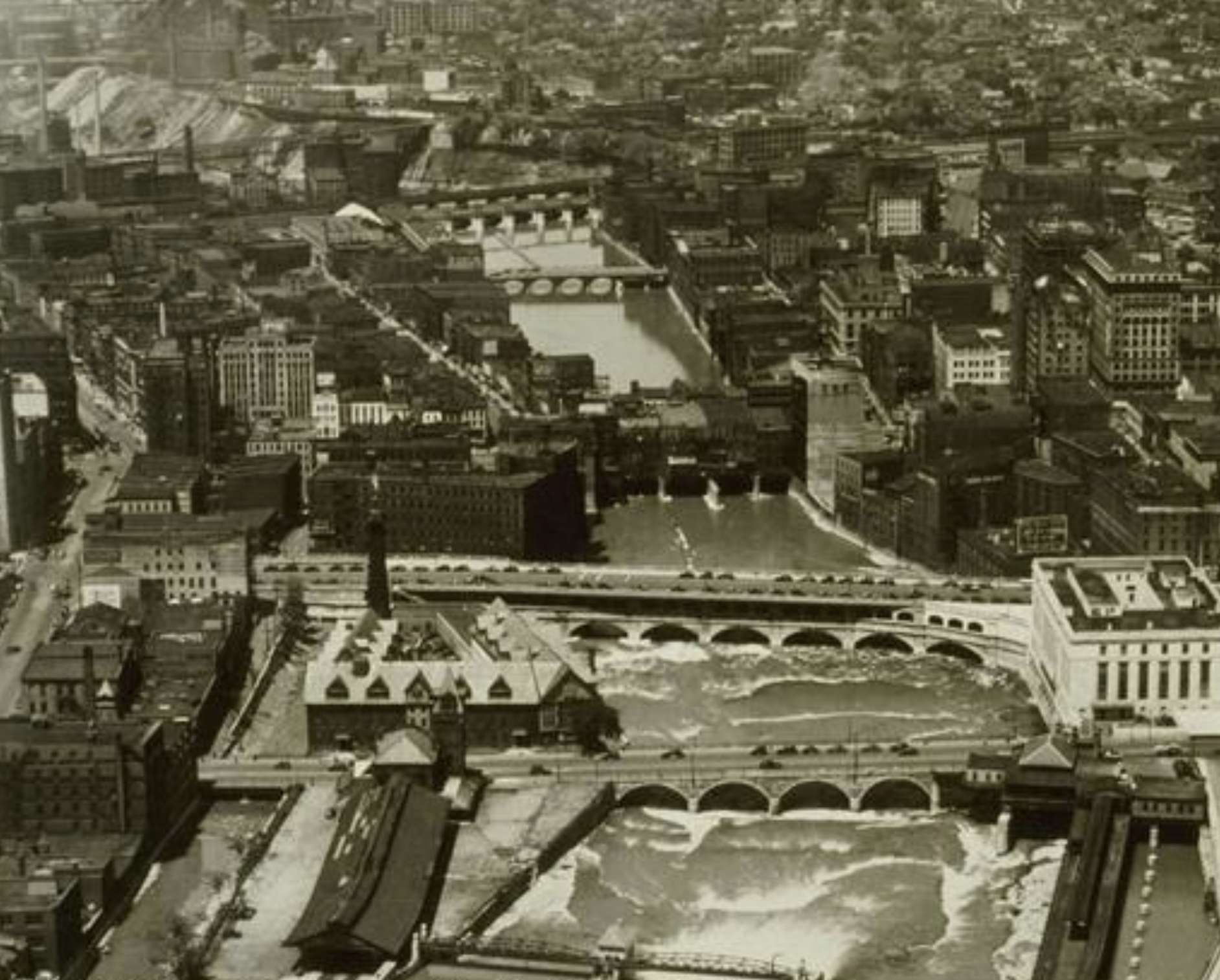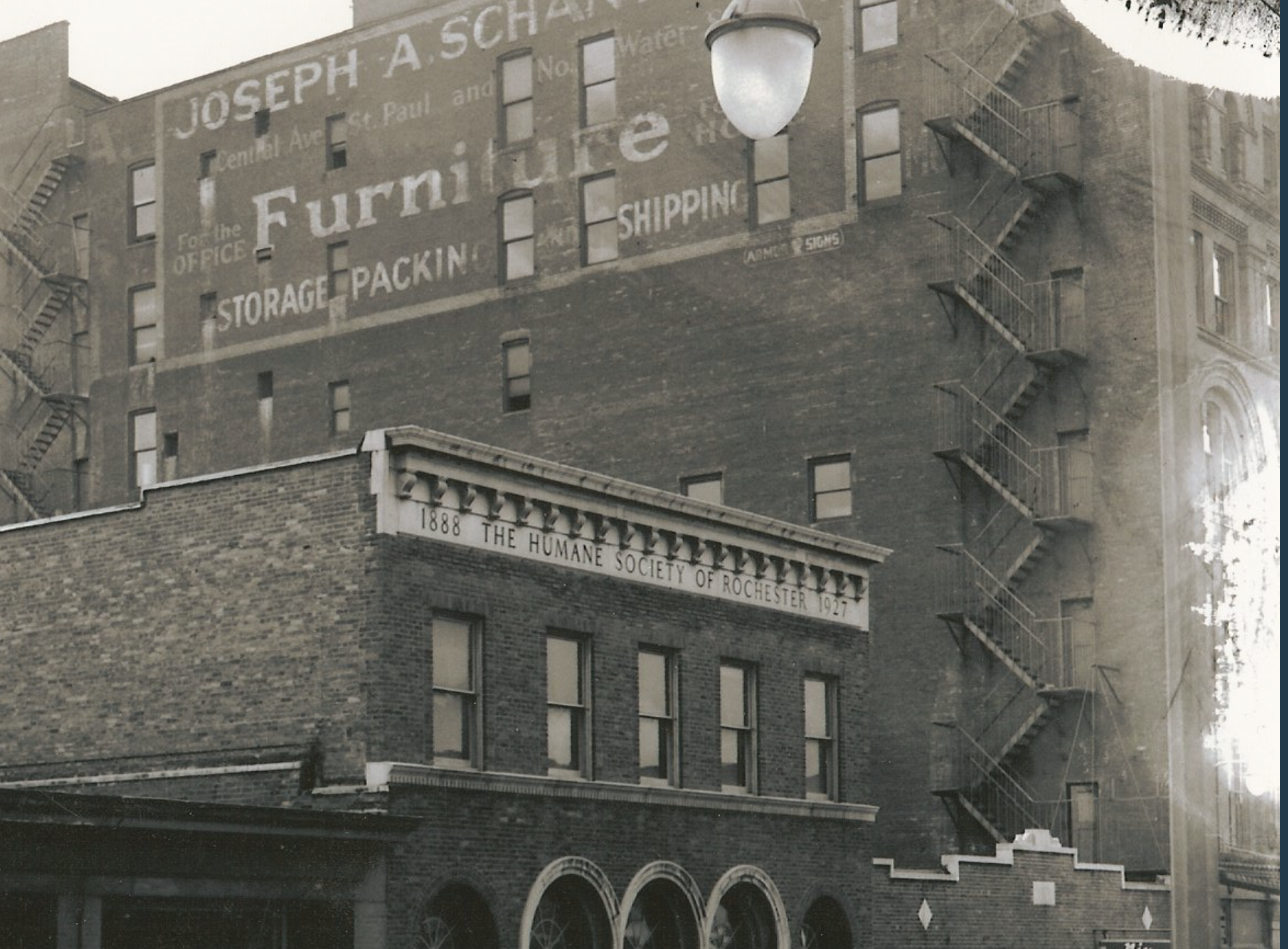A City Rich with History
Rochester has a long history of train stations. The first major Rochester station was built in 1845 by the New York Central Railroad on Mill Street by High Falls.
In the 1880s, the railroad tracks were elevated (having previously been at grade) and in 1882 the station was relocated to the east side of the Genesee River, close to the modern station site on Central Avenue at St. Paul Street. This station was notable for its large train shed. Not long after the 1882 station was established, the city of Rochester would have four major train stations, The New York Central station, the since demolished Erie Railroad Depot, the Lehigh Valley Railroad Station that currently houses Dinosaur Bar-B-Que and the Rochester terminal of the Buffalo, Rochester, and Pittsburgh Railway which currently houses Nick Tahou Hots.

The 1882 station would be demolished and replaced in 1914 at the modern site by the more famous New York Central station designed by Claude Fayette Bragdon. The station, often referred to as Bragdon Station, was four stories with three high arching windows reminiscent of train driving wheels and a main room that was reminiscent of New York’s Grand Central Terminal complete with arched ceilings and a lunch counter. The station at its height had 6 island platforms connected to the main station building by two tunnels, one for passengers and one for baggage and mail that went all the way to the Cumberland St. Central Post Office. The station was seen as one of Bragdon’s greatest architectural accomplishments. As was the case with several large union stations of the era, with falling revenues and the high maintenance costs and taxes of such a large facility the station was sold by the New York Central Railroad in 1959 to a private owner.

Rochesterville, as it was once called, was founded in present day downtown Rochester by Col. Nathaniel Rochester, Maj. Charles Carroll, and Col. William Fitzhugh, all of Hagerstown, Maryland. After the opening of the Erie Canal, which flowed through downtown Rochester until the early 20th century, the area boomed as a result of the city’s flour industry. By 1834, some 20 flour mills were producing 500,000 barrels annually, the population reached 13,500 and the city area expanded to 4,000 acres (16 km2). Rochester was then re-chartered as a city, and Jonathan Child, son-in-law of Col. Rochester, was elected its first mayor.
Following the Civil War, many post-war industrial companies were founded in Rochester including Kodak, Bausch & Lomb, Western Union and Gleason Works. The city hall opened downtown in 1875.
At the turn of the century, Rochester was a thriving city. Street cars operated throughout the area and a subway was opened in 1927 on the old Erie Canal bed that ran through downtown. The subway operated for 29 years until it closed in 1956. After the subway was shut down, a series of bus routes were opened and a new auxiliary Interstate Highway was opened that would become I-490.
In 1962, Midtown Plaza was constructed in downtown Rochester. Midtown was a major urban shopping mall and the first urban indoor shopping mall in the United States. Midtown Plaza brought many people downtown, but it would soon become a victim of suburbanization. From the 1960s into the 1980s, suburban shopping malls such as Eastview Mall in Victor and The Marketplace Mall in Henrietta opened up. McCurdy’s and Forman’s closed in 1994. Their closing was quickly followed by the closing of the Midtown branch of Wegmans Food Markets. Before long the mall’s only tenants were Peebles department store, Radio Shack, Payless Shoes, some downscale clothing stores, a dollar store, two jewelry stores, a gift shop and a US post office. The mall finally closed in 2007 and the land was redeveloped into a mix of residential and office space.[4] Midtown Tower was renovated and reopened as a mixed use tower of apartments, condos, restaurants and stores called Tower 280 in 2015. Windstream opened a regional headquarters in the former Seneca building part of the mall and Gannett constructed an adjacent office building at the corner of Main and Clinton for the Democrat and Chronicle that opened in May 2016.


